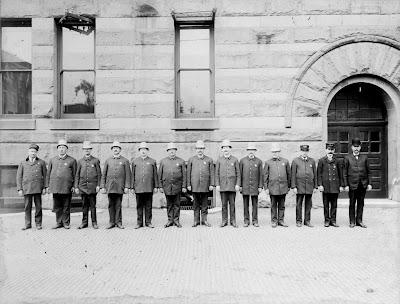When the Fort Wayne
New reported on March 24, 1900, that John Kelly Stevens had just lost a
nephew in Lafayette, Indiana,
there was one shred of possibility that I knew was correct: Lafayette was John Kelly’s home town.
Lafayette has always been a rather small town—although, as
transportation modalities shifted over the decades, I imagine the town’s population
swelled and contracted parallel to the town’s economic fortunes.
It’s a town nestled on the bank of a river—the same river
which most likely brought John Kelly’s father up the Mississippi
from New Orleans
in the first place.
Perhaps the elder John Stevens was seeking employment when
he left New Orleans and continued up river on
the final leg of his emigration from Ireland in 1850. For whatever
reason, he saw fit to end his travels when he reached Tippecanoe County, Indiana.
While the details I’ve been able to find so far are murky,
apparently John Kelly Stevens’ father met and married the former Catherine
Kelly—now you know where the “Kelly” in John Kelly Stevens comes from—in Lafayette, where the
couple became the proud parents of three boys: James, John Kelly, and William.
Thanks to notations in a family Bible passed down through
the family—but unfortunately subsequently destroyed in a house fire—I have a
few details on each of these three sons.
A few, I say.
Finding any corroborating evidence has been difficult.
Here’s what I know, so far, about John Kelly’s two brothers.
The eldest, named James, was born in Lafayette sometime around 1854. Unlike his
brother John Kelly who found work as an adult in Fort Wayne,
James remained in Lafayette
nearly his entire life. I say nearly
because, during a trip to Saint Louis in 1904, James fell ill and died. He was buried in a plot at Calvary Cemetery
reserved for the city’s purposes in burying transients—although for whatever
reason, among the Stevens ephemera passed down to me from Agnes Tully Stevens
personal effects was the receipt and paperwork for the bill sent back to family
to cover James' burial expenses.
James’ Missouri death certificate
reported that he had only been in Saint
Louis for four days. He was listed as a laborer from Indiana, and as a
widower. As best I can determine, his wife was alternately called Ellen and
Ella, and was most likely a child of James and Margaret Nash (Margaret,
incidentally, residing next door to James and Ella in the 1880 census).
James and his wife did have one child that I know of,
although his birth in 1880 must have happened after that year’s census was
taken. If it weren’t for that family Bible, I wouldn’t have known about him at
all, though, for he died in 1890—far too soon for his name to show up in the
next available census, and unfortunately also too soon for government records to
capture significant details about his life or family.
Unless there were other children born to James and his wife,
his son Johnny’s early death precluded any possibility that James would be the
source of the mystery nephew that precipitated this search through the family
tree.
John Kelly’s younger brother provided more possibilities for
the source of that news report about the alleged nephew, Raphael Kruse.
William, born in 1858, also spent his entire life in Lafayette, marrying the former Alice Munger
in 1892 and raising four children.
Any shouts of victory for having found the source for the
mystery nephew, though, are short lived. While William did have three daughters—the
likely source of a nephew whose surname was not
Stevens—only one of them had children. As far as I can tell at this point,
William’s son Elbert had no children. Nor did daughters Ruth or Harriette. And
Lulu, the eldest child, married a man by name of Wood, and bestowed upon their
children the more pedestrian given names of John and Jeanne. No Raphael here.
So, while we can safely conclude that whoever that Raphael
Kruse of the newspaper report may have been, he was not nephew to John Kelly
Stevens by virtue of any relationship through his two brothers.
John Kelly did, however, have a second family—his half-sisters
by virtue of his father’s second marriage, following the death of Catherine
Kelly, to a woman by the name of Eliza Murdock. Perhaps through the descendants
of those three half-sisters—Sarah, Mary, or Elizabeth—we can find the connection
with the unfortunate Raphael Kruse.
Map of Lafayette in artist A.Ruger's conception of a bird's eye view of the city in 1868. Published in Chicago by the Chicago Lithograph Company. Courtesy Wikipedia; in the public domain.






